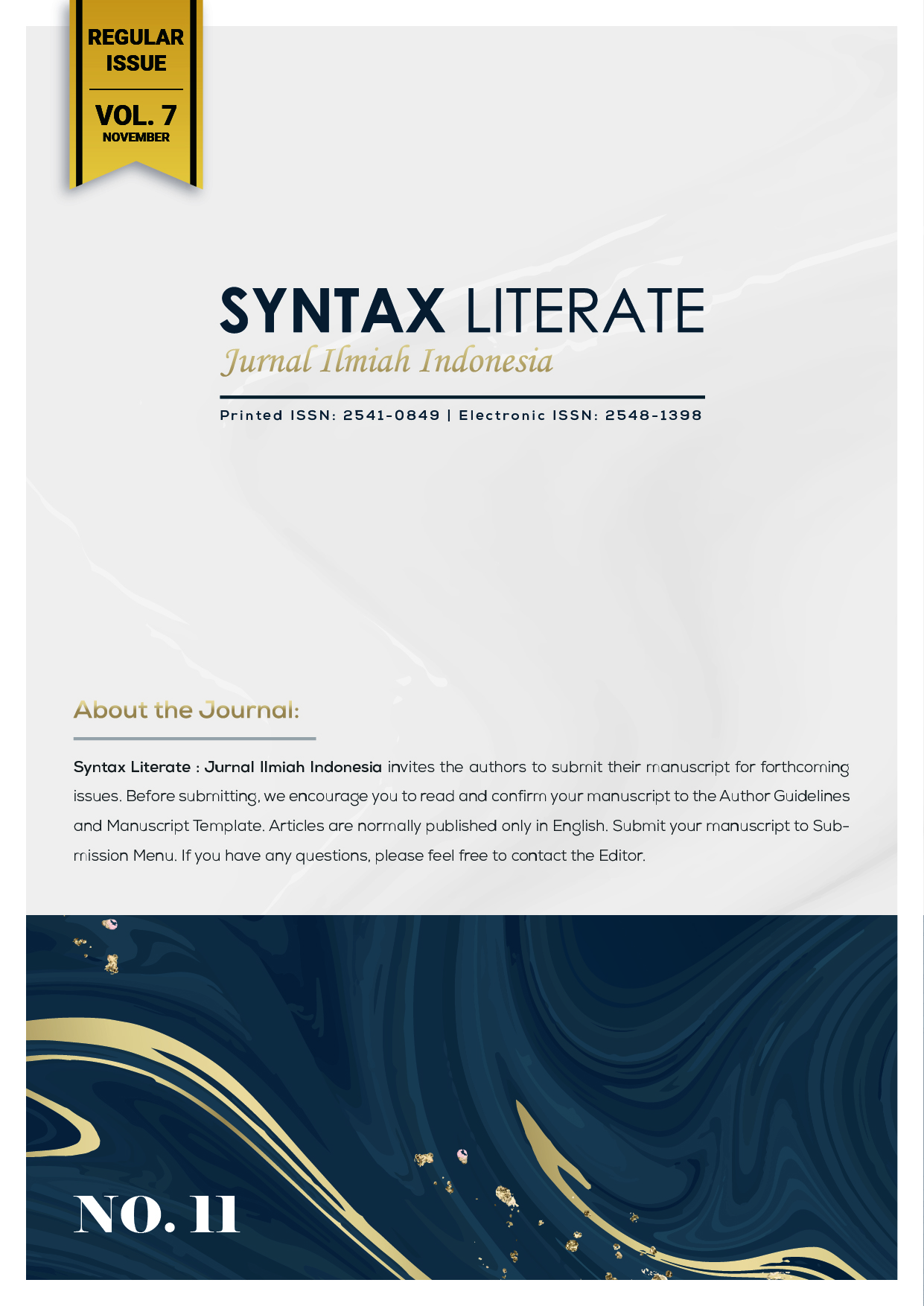Efek Moderasi Gender Atas Pengaruh Profitabiltas dan Peluang Pertumbuhan Terhadap Nilai Perusahaan
Abstract
Meningkatkan nilai perusahaan merupakan salah satu tujuan bagi perusahaan. Penelitian terdahulu melihat adanya pengaruh profitabilitas dan peluang pertumbuhan terhadap nilai perusahaan. Berpijak pada rekomendasi dari OECD yang mendorong perusahaan untuk meningkatkan peran serta Wanita dalam pengambilan keputusan, penelitian ini menguji pengaruh diversifikasi gender terhadap nilai perusahaan dan efek moderasi gender atas pengaruh profitabilitas dan peluang pertumbuhan terhadap nilai perusahaan. Sampel penelitian terdiri dari 100 tahun perusahaan yang terdaftar pada index LQ-45 di Bursa Efek Indonesia. Sedangkan periode analisis mencakup tahun 2017 sampai dengan tahun 2020. Pengujian hipotesis menggunakan regresi data panel dan Moderated Regression Analysis (MRA). Hasil penelitian menunjukkan bahwa diversifikasi gender berperan sebagai quasi moderator dan memberikan efek moderasi baik terhadap pengaruh profitabilitas terhadap nilai perusahaan maupun pengaruh peluang pertumbuhan terhadap nilai perusahaan.
Downloads
References
Aherm, K. R., & Dittmar, A. M. Y. K. (2012). The changing of the boards : The impact on firm valuation of mandated female board representation. The Quarterly Journal of Economics, 127(1), 137–197. https://doi.org/10.1093/qje/qjr049
Amarudin, Adam, M., Hamdan, U., & Hanafi, A. (2019). Effect of growth opportunity, corporate tax, and profitability toward value of firm through capital structure (Listed manufacturing companies of Indonesia). Finance: Theory and Practice, 23(5), 18–29. https://doi.org/10.26794/2587-5671-2019-23-5-18-29
Borghesi, R., Chang, K., & Mehran, J. (2016). Simultaneous board and CEO Diversity: Does it increase firm value? Applied Economics Letters, 23(1), 23–26. https://doi.org/10.1080/13504851.2015.1047082
Brigham, E. F., & Houston, J. F. (2019). Fundamentals of Financial Management (15th Edition). Cengage Learning.
Chauhan, Y., & Dey, D. K. (2017). Do female directors really add value in Indian firms? Journal of Multinational Financial Management, 42–43, 24–36. https://doi.org/10.1016/j.mulfin.2017.10.005
Coase, R. . (1937). The nature of the firm. Economica, 4(16), 386–405. https://doi.org/10.1111/j.1468-0335.1937.tb00002.x
Jensen, M. C., & Meckling, W. H. (1976). Theory of the firm: Managerial behavior, agency cost and ownership structure. Journal of Financial Economics, 3, 305–360. https://doi.org/10.1016/0304-405x(76)90026-x
Kusumawati, R., & Rosady, I. (2018). Pengaruh Struktur Modal dan Profitabilitas terhadap Nilai Perusahaan dengan Kepemilikan Manajerial sebagai Variabel Moderasi. Jurnal Manajemen Bisnis, 9(2), 147–160. https://doi.org/10.18196/mb.9259
Lindenberg, E. B., & Ross, S. A. (1981). Tobin’s q ratio and industrial organization. The Journal of Business, 54(1), 1. https://doi.org/10.1086/296120
Malmendier, U., Tate, G., & Yan, J. (2011). Overconfidence and early-life experiences: The effect of managerial traits on corporate financial policies. Journal of Finance, 66(5), 1687–1733. https://doi.org/10.1111/j.1540-6261.2011.01685.x
OECD. (2017). 2013 OECD Recommendation of the Council on Gender Equality in Education, Employment and Entrepreneurship. 2013 OECD Recommendation of the Council on Gender Equality in Education, Employment and Entrepreneurship.
OECD. (2020). Policies and Practices to Promote Women in Leadership Roles in the Private Sector Report prepared by the OECD for the G20 EMPOWER Alliance.
Prasetyo, F. E., Swandari, F., & Dewi, D. M. (2017). Pengaruh profitabilitas, pajak dan growth opportunity terhadap nilai perusahaan melalui struktur modal sebagai variabel intervening. Jurnal Wawasan Manajemen, 5(1), 51–62. https://doi.org/10.20527/jwm.v5i1.106
Reddy, S., Veeraraghavan, M., & Jadhav, A. (2018). Board gender diversity, family-connected directors and firm value. SSRN Electronic Journal, 9, 1–34. https://doi.org/10.2139/ssrn.3248279
Robinson, G., & Dechant, K. (1997). Building a business building for diversity. The Academy of Management Executive, 11(3), 21–31. https://doi.org/10.5465/ame.1997.9709231661
Salvatore, D. (2005). Ekonomi manajerial dalam perekonomian global. Salemba Empat.
Schubert, R. (2006). Analyzing and managing risks – on the importance of gender differences in risk attitudes. Managerial Finance, 32(9), 706–715. https://doi.org/10.1108/03074350610681925
Sianipar, S. (2017). Pengaruh Struktur Modal dan profitabilitas terhadap nilai perusahaan pada sektor makanan dan minuman yang terdaftar di Bursa Efek Indonesia. Jom FISIP, 4(1), 1–14.
Siregar, M. E. S., Dalimunthe, S., & Trijuniyanto, R. S. (2019). Pengaruh profitabilitas, ukuran perusahaan, kebijakan dividen dan struktur modal terhadap nilai perusahaan pada perusahaan manufaktur yang terdaftar di Bursa Efek Indonesia periode 2015-2017. Jurnal Riset Manajemen Sains Indonesia (JRMSI), 10(2), 356–385.
Sugeng, B. (2017). Manajemen Keuangan Fundamental. In Deepublish. Deepublish.
Utomo, N. A., & Christy, N. N. A. (2017). Pengaruh stuktur modal, profabilitas, ukuran perusahaan terhadap nilai perusahaan pada perusahaan LQ45 di Bursa Efek Indonesia. Bingkai Manajemen, 20, 398–415.
Varaiya, N., Kerin, R. A., & Weeks, D. (1987). The relationship between growth, profitability, and firm value. Strategic Management Journal, 8(5), 487–497. https://doi.org/10.1002/smj.4250080507
Copyright (c) 2022 Muhammad Fadly Ramadhan, Tatang Ary Gumanti, Hendrik Gamaliel

This work is licensed under a Creative Commons Attribution-ShareAlike 4.0 International License.











